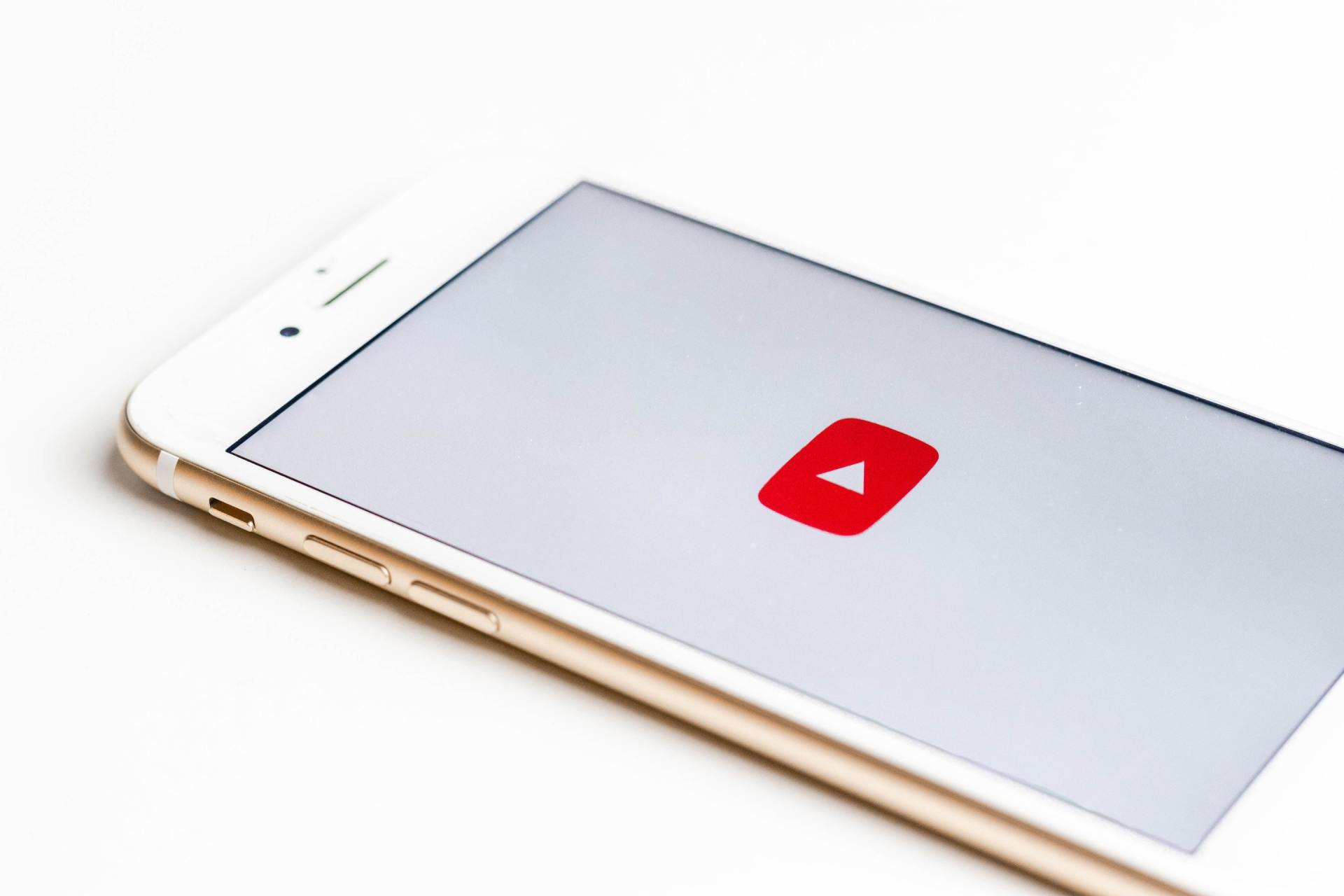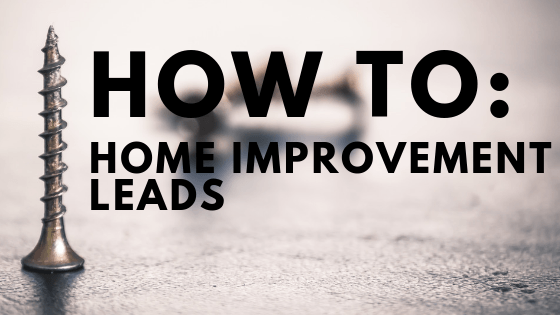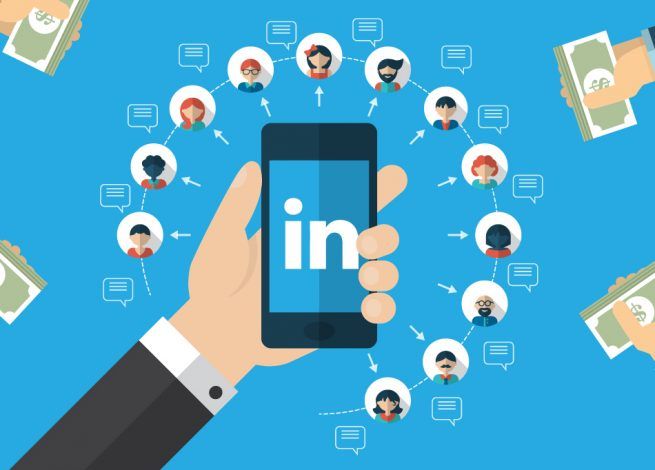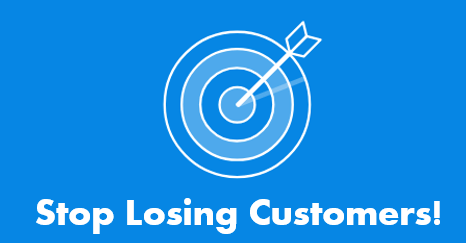Free Lead Generation Training for Beginners
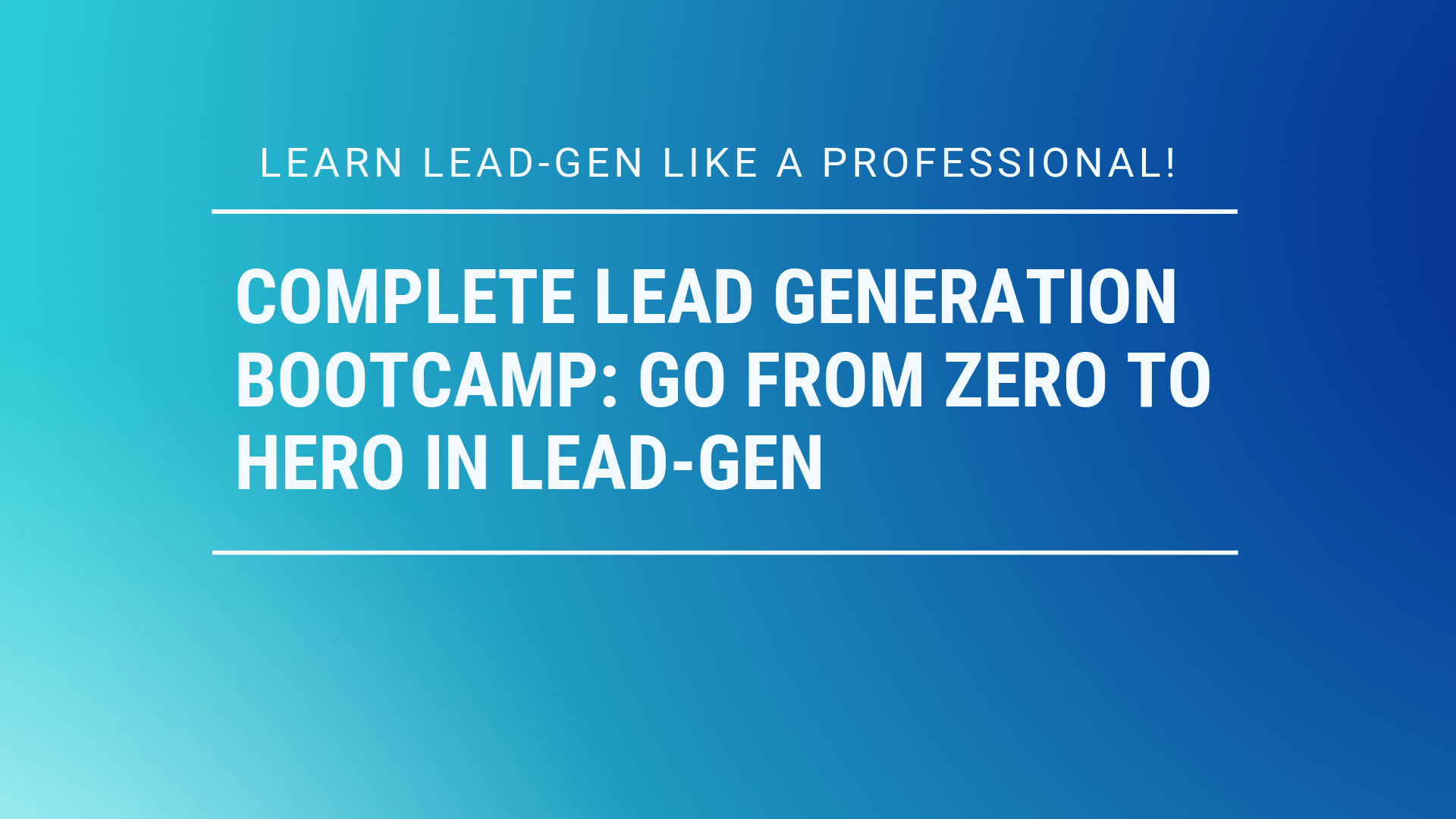
It’s no secret that lead generation is important.
In fact, it’s a culmination of several different skills: you need to master content, sales, psychology, and good old-fashioned marketing if you want other people to become clients.
Bottom line? If you want more shmoney, lead-gen is a must.
And in this guide I’m going to show you everything you need to generate quality leads.
Here Are 5 Ways To Get Free Leads Online for Beginners
See also: 5 things they don't teach you at school.
Let's dive right in:
#1. LinkedIn Lead Generation
Have a coffee, this is a long post:

It's fine, we're all in this together.
The Drip Sequence
Now that you've got your LinkedIn profile whipped into shape, the next step is THE DRIP SEQUENCE:
Message 1 - The Connection RequestMessage 2 - Thanks for connecting
Message 3 - Send a useful article
Message 4 - Ask for a meeting
Message 1 - The Connection Request
Now the big question is “What do you say in these connection requests?”
Well the key is to NOT BE SALESY.
Or spammy.
To do that, we will reach out in a very casual and friendly way.
For example:
Hi {{first_name}},
I was browsing your profile and noticed we are in a similar space so I thought I would reach out to connect.
-John Taylor
I help agencies and consultants win their dream client
Notice how this message has zero sales pitch in it.
Instead, all we do is add the tagline
under our name as a “Signature”. This helps position you in your prospect's mind without outright saying “Hire me!”
The psychology behind this:
“People don’t like being sold, but they love to buy.”
It’s not salesy, or pushy. And as a result, people come to you.
TIP:
Send 20 connection requests per day and slowly ramp up to 100 MAX over a two week period.
**LinkedIn may flag your account for unusual activity. Keep your changes gradual.
Message 2 - Thanks for connecting
Once someone accepts your connection request, you want to respond with a casual thank you for connecting message. You still don’t make a sales pitch in this message but you do include your tagline again.
Message 3 - Send a useful article

If someone still hasn’t responded or engaged with you, then the next step is to create value. You can do this by sending over a useful article that would be valuable to your target prospects.
Ideally you want to find an article that both:
- Delivers value
- Positions the product you are selling
For example, if I have software product focused on Conversion Rate Optimization, then I may send over an extremely high quality article about Conversion Rate Optimization as a way to build trust and create value for the prospect.
This builds trust and also positions you in the prospects mind.
Note that the article rarely actually produces many responses or leads in itself, but it does built trust so that you have a higher conversion rate in step 4.
Message 4 - Ask for a meeting
The final step is to make an ask for a meeting. At this point, you still don’t want to give a full on sales pitch. Instead you want to ask for a meeting with a 1-2 sentence explanation on why it would be beneficial for the other person to hop on the call with you.
Remember, your prospects don’t care about you. They only care about themselves.
So frame your meeting ask in a way that will be beneficial to them.
Put your tagline in every message
One final piece of advice is to put your tagline as part of a signature in every message until a prospect engages with you in conversation. This helps keep you well positioned and top of mind in your prospects eyes.
Responding to incoming connection requests.

The next question is “What do I say to these people who add me as a connection?”
First, you want to take some time to research them a bit before responding so you can personalize your message. Take a look into their profile, business and website for a bit of background.
Then you can respond with something like.
“Hi _____,
Thanks for reaching out to connect. I just took a look at {{company_name}} and I noticed {{mention interesting things you saw about them and their business.}}
Can I ask why you reached out to add me as a connection on Linkedin?
Name
Tagline”
Once again, you will see that you are not making a heavy pitch here. Instead you are just engaging in a conversation and then probing the prospect by asking a question.
At this point, they have ADDED YOU as a connection so you can use this as a way to frame a question to them and start a dialogue.
Not everyone will engage with this, or some people may be looking to sell you services, but this framework does a great job of getting a conversation started.
If you have a strong tagline, you will hear many responses like “Your value proposition caught my eye as we currently need help with X”
That is a great kind of response to get!
What to expect from using these tactics
Well simply put, if you are a well niched company then this is going to generate a lot of qualified leads for your business.
On average, we see between 3-20 qualified leads for most of our prospects per month. In some cases we have had upwards of 30+ leads in a single month for well niched businesses who had strong positioning that appealed to a serious industry pain point.
BUT, it is going to generate a lot of unqualified leads as well.
Typically about 50% of the responses that come through end up being unqualified leads, people trying to sell you something, or prospects who just aren’t the right fit.
Even with all of the narrowing of your LinkedIn search queue, non-ideal prospects will still find their way into the mix. You see LinkedIn is a social network, not a database.
That means each person gets to self-classify their own profile. It’s not uncommon for a one person consultancy to list themselves as company size of 11-50 just so they look bigger than they are.
This “Self-Classification” can lead to a lot of unqualified leads coming through regardless of how narrow you get in your search queue.
Time Investment
If you do this all yourself, you are looking at a 90 minute per day time investment. We admit, running all of these tactics takes a lot of time and energy.
4 tips on how to nurture leads from Linkedin outreach.
In the final section of this article, I am going to dive into what you do once you actually start generating leads and responses on Linkedin.
These 4 tips will give you the fundamentals of what to do when you start seeing those responses in your Linkedin inbox.
1) Start conversations
There is one fundamental difference with this type of Linkedin outreach from any form of cold outreach or cold calling. While most cold outreach is pushing directly for a sale, this form of Linkedin outreach is instead a conversation starter.
You aren’t making a hard pitch in most of your messages, so as a result you don’t get a hard business response every time.
Instead, you will find that many people engage in a conversation with you. They may ask you a question about your business, what you do, who you serve, how you can help them?
Or in some cases, they may just strike up a random conversation about mutual interests or where you live.
This throws some people off who are new to this type of outreach, but in reality these conversations are where all of the benefits are.
You start talking with someone, build up some trust, and then move it to a sales conversation.
Don’t dive into this form of outreach ready to sell, sell, sell. Instead, start with a conversation.

2) Don’t try to close a deal on Linkedin - Your goal is a call or email
One of the biggest mistakes I see people make is that they have someone ask “Tell me more about what you do” and in response they write a novel of an answer.
Their answer takes the person through all the details of what they do, and why the prospect should buy.
The result is crickets on the other side…
Remember, people like to buy. They don’t like to be sold.
Your goal with LinkedIn is to just create enough interest and intrigue to move the conversation from Linkedin to a phone call or email dialogue.
Don’t try to close the deal on Linkedin.
Instead, you get them on the phone which is where you make the actual sale.
3) Research your prospects before you respond
When you have several unread messages, it’s tempting to just fire off a response to each one quickly and be done with it.
But if you really want to see the best possible results, you should take 2 minutes to research each prospect and craft a personal response according to what you learn about them.
In some cases, that 2 minutes will actually help you realize this prospect isn’t worth pursuing.
And in other cases, they will be an amazing prospect and your personalized response will help build trust and create a more dynamic conversation.
CHECK OUT THESE RELATED POSTS:
⚡ How To Automate Becoming A LinkedIn Influencer
⚡ 11 Ways to Speed Up WordPress for Lead-Gen
⚡Top 5 YouTube Lead Generation Hacks
#2. Blogging Lead Generation
Want to generate leads through blogging?
You've got 2 seconds to hook your reader.No pressure though! 😉
Before you start writing you need to choose the right topic to blog about...
The most effective posts are those that align your landing pages.
This will nurture visitors from contact to lead to customer .
There are five things you need to do in order to pick a the best blog post topics:
- Answer a question on Google that people are searching for.
- Choose a highly targeted topics. These rank faster in search engines.
- Outdo your competition. Write a better, more useful post.
- Start with writing response posts. They rank faster on Google. (read about response posts below)
- Brainstorm. Research 30+ blog post topics that you can rank for first and then start writing.
The great thing about using your blog posts to promote your landing pages is that you can tailor the entire article to the end goal. So, if your offer is an instructional video on setting up Google Search Console, then you can write a blog post about how to select your marketing metrics … which would make your CTA highly relevant and easy to click.
Once you have chosen your blog topics let's learn How to Write the Perfect Blog Post for Lead Generation.
#3. Local SEO Lead Generation
The secret sauce to lead generation?
Free Google Traffic!
In this section, you'll learn how to:
- How to optimize your Google Maps listingto INCREASE QUALIFIED LEADS TO YOUR BUSINESS!
- Rank a local business website on the 1st page of Google
- Identify the best, most profitable keywords for local businesses
- Find and obtain high quality back links and specific local business back link opportunities
- Understand the entire local SEO process from start to finish
- Properly optimize a local website for maximum SEO benefit
- Find and obtain high quality back links and specific local business back link opportunities
- Build quality citations for fast ranking in the Google local pack
Most of your competitors aren't optimizing their Google listings. Which is an opportunity to outrank them and get all the organic local traffic to your site.
So be sure to update your business listing if you really want to dominate both Google Maps and organic listings.
You can do this yourself. But it is time consuming.
If you'd like to hire this part out, I'd recommend a freelancer on Fiverr.com. The time you save is well worth the money.
Here is a step-by-step video guide to exploding your organic local traffic.
Topics covered :
- Google My Business Setup: 3:21
- Google My Business Optimization: 8:50
- Onpage Optimization: 17:45
- Citations: 25:58
- Backlinks: 32:05
👋 Additional Reading: 27 More Free Traffic Hacks for Lead Generation
#4. Landing Page Lead Generation
Good landing page conversion is absolutely essential to lead generation.
What's the point of buying traffic to your site if you don't put in the effort to understand how to convert it?
- If you think this stuff is complicated, it's not.
- If you think landing page design stuff is expensive, it's not.
- If you think conversion rate optimization is time consuming, it's not.
- If you think watching this course won't make a different to your bottom line ... think again.
Trust me, I learned all this the hard way.
This is the info on landing page design I wish I had when I was first starting out!
Watch this super helpful video tutorial that will teach you the fundamental principles of good, lead-gen landing page design in WordPress:
#5. Lead Follow-up Hacking
What are the top 3 ways to convert leads?
- Call
- Text
How and When to Call Leads
Is there a time, date, or approach to calling your prospects that's scientifically better than the rest?
Yes!
Best Times to Make Sales Calls
These days, many reps are more comfortable sending an automated email than picking up the phone. But, before moving forward, it's worth identifying whether the phone is even the best way to follow up with leads today.
That answer is " Yes. " A recent study by sales pro Marc Wayshak shows the phone is still the best tool in selling, with 41.2% of respondents naming their phone as their most effective sales tool.
Best Days of the Week to Call Leads
The best days of the week to call leads are on Wednesdays and Thursdays.
In the classic Lead Response Management Study, Wednesday and Thursday were the best days to qualify leads. In fact, there was a 49% difference between leads qualified (meaning they agreed to enter the sales process) on Thursdays and those that qualified on Tuesdays.
So, does this data still hold true today? A 2017 CallHippo survey looked at 24 weeks of data across thousands of companies and found Wednesdays and Thursdays are still the best days to call prospects.
In this survey, they found a 46% difference between calls made on Wednesdays (the best day to call) and those made on Mondays. Friday remained the worst day on which to call prospects.
Best Times to Call Leads
The best times of day to call leads are between 4:00 and 5:00PM and between 8:00 and 10:00 AM in their local time zone.
The Lead Management Study discovered the best time to qualify leads was between 4:00 PM and 5:00 PM local time. The second-best time was around 8:00 AM.
The worst time of day to call leads is between 11:00 AM and 2:30 PM in their local time zone.
The worst time to qualify leads during the work day? Stay away from the phone at 11:00 AM and 2:30 PM respectively -- unless you're unafraid of the 164% qualifying success rate difference between reps who called between 1:00 PM and 2:00 PM and those calling between 4:00 PM and 5:00 PM.
When looking at how this data has aged, the same CallHippo survey found between 4:00 PM and 5:00 PM is still the best time to call prospects. 11:00 AM and 12:00 PM is the second most successful time to call -- a different result from the Lead Management Study -- and between 1:00 PM and 2:00 PM is the least successful time.
A 2018 PhoneBurner study, however, found the most productive time to cold call prospects is 10:00 AM in the prospect's time zone. Of those salespeople surveyed during this time, 15.53% had their calls answered -- 3% better than the second-best hour, 2:00 PM, which saw a 15.01% success rate. Their data did support the findings that between 12:00 and 1:00 PM is the worst time to call your prospect.
Best Response Time for Connecting with Leads
The best response time for following up with leads is within 10 minutes.
The Lead Management Study saw a whopping 400% decrease in odds of qualifying leads when reps waited 10 minutes or more to follow up. And the rate of success continued to decrease the longer reps went before following up. The best time to call new leads was within five minutes of their first trigger event.
A 2018 InsideSales.com test seems to support this data -- kind of. In their survey, InsideSales.com Labs tested the response times and persistence of nearly 200 companies and scored their replies.
They did this by looking at only high-priority inbound leads signaling intent to purchase (i.e., demos, contact forms, or pricing requests). International siding company James Hardie earned the number one spot with a 3:48-minute response time and seven touches total.
They were the only company to come in under that magic five-minute follow-up mark, however. The other companies in the top 10 rang in slightly under or well above the 10-minute mark. LinkedIn had a 9:03-minute response time with five touches total.
Consulting firm KPA had a 19:37-minute lead response time but a respectable six touches total. And platform company Dynamic Signal nabbed the number two spot with an 8:20-minute response time and an impressive 14 total touches.
How to Make a Follow-Up Sales Call
With all of this updated data, what should you do when it pays off and a prospect actually answers the phone?
Make multiple follow-up calls
Sales reps should make at least six follow-up calls to leads before moving on.
The Lead Management Study shows reps should call at least six times before throwing in the towel. Shockingly, over 30% of leads in the study were never contacted at all. By making more call attempts -- or call attempts, period -- sales reps experienced up to a 70% increase in contact rates.
A 2018 Bridge Group Inc. SDR Metrics Report found most reps make an average of 45 dials per day -- a number that's hovered around 50 for the last decade.
The report states "There is much debate over the usefulness of this metric. It remains, however, one of the few levers that individual SDRs are able to pull. Dials are 100% under your reps' control -- conversions, demos, and meetings are not."
The study also cites an article by EverFi President Preston Clark in which he laments "The Rise of the Silent Sales Floor." He says, "When the hum of voices is replaced with the hum of keystrokes, you should be very, very concerned." To remedy this, Clark recommends reps learn how to lead a sales process from start to finish. "Every step. Every stage. Open to close."
Make a Good Impression When You Connect with Leads
Sales reps should use active, friendly, and engaging language to interest leads within the first five minutes of connecting on a follow-up call.
The data experts over at Gong.io analyzed more than 100,000 connected outreach calls and analyzed them using AI. They found a few things to be true:
- Once connected, you have five seconds to earn five minutes of your prospect's time.
- Successful calls are almost twice as long as unsuccessful calls, clocking in at 5:50 and 3:14 minutes respectively.
- Successful calls are about educating your prospect and selling a meeting. Therefore, successful salespeople spend 54% of the call talking, while unsuccessful salespeople spent only 42% of their time speaking.
- Don't be afraid of the "monologue." Successful calls saw a whopping 70% more five-second monologues from salespeople than unsuccessful calls.
- Don't fear silence from your prospects. Unsuccessful calls saw prospect monologues up to eight seconds long. In successful calls, prospect's monologues lasted only around 3.5 seconds.
- Using " Did I catch you at a bad time " makes you 40% less likely to book a meeting.
- Asking " How are you? " correlates with a 3.4X higher likelihood of booking a meeting.
- Beginning your call with " The reason I'm calling is … " increases your success rate by 2.1X.
- Asking " How have you been? " increases success rates by 6.6X.
- Using " We " instead of " I " increased success rates by 35%.
Ask Customers and Leads for More Referrals
Sales reps should source referrals to increase the pool of leads they're following up with every day.
While the Lead Management Study's data showed reps should be calling at least six times before moving on, it's also important to pay attention to how many leads you're reaching out to.
A recent survey by Marc Wayshak shows most salespeople aren't getting in front of enough prospects. In fact, 66.7% of respondents reported reaching out to 250 or fewer leads in the past year. Only 15% reached out to over 1,000 prospects.
While 54% of salespeople in Wayshak's survey lamented it's harder -- or much harder -- to get in front of prospects than it was five years ago, these numbers also reveal an increased need for salespeople to outreach to more prospects and leads than ever before.
One way to boost your pipeline and gain more leads to call? Ask for referrals. 57.9% of respondents asked for fewer than one referral a month. Roughly 40% reported rarely asking. And only 18.6% asked every person they met with for a referral.
Since referrals have a much higher chance of closing, they can be a great place to start when you're trying to increase lead count and thereby the number of follow-up calls you can make.
Few salespeople relish making prospecting calls. But it's one of the most important parts of the job. So, shouldn't you do it well and maximize your impact, so you can spend more time doing the part of your work you actually love? This data can help you do just that.
How to Text Leads
How many unread emails versus texts do you have right now?
If you’re like most people, the first number is far bigger than the second. According to Mobile Marketing Watch, 98% of all text messages are opened compared to 22% of emails.
A separate study found nine in 10 texts are read within three minutes of delivery.
Salespeople should take note of these statistics. It’s difficult to get on buyers’ radars in the first place, let alone stay there. Text and live chat can be fantastic mediums for staying top-of-mind for your prospects, which is leading to the evolution of business conversations.
The following guidelines will help you reap the benefits of text while staying professional:
Time Your Texts Right
Suppose Sarah, an enterprise salesperson, receives a notification a new prospect just downloaded an ebook. She sends a text to the cell phone number he provided:
“Hey Jimmy! Let me know if I can answer any questions about the latest agronomic trends. -- Sarah, Sigment account executive”
If you feel this approach is too forward, you’re not alone. Research from Velocify shows sending text messages to a prospect before connecting with them on the phone decreases the likelihood you’ll ever connect by almost 40%.
Even if you successfully contact your prospect via text, they’re 4.9% less likely to eventually buy compared to prospects you didn’t text before calling.
But what if you call and then text? The Velocify study found prospects who were sent text messages only after initial contact had been made converted at more than twice the rate of the average contacted lead.
With that in mind, don’t text buyers until you’ve talked to them on the phone.
Ask for Permission
If you’re worried your prospect will react negatively to an unexpected message, ask for permission to text them.
At the end of Sarah’s first call with Jimmy, for example, she might say, “Would it be okay if I texted you? My customers tell me it’s faster and more convenient to confirm our meetings or get information over text than email.”
This request will probably be successful for two reasons. First, Sarah establishes this is a normal practice -- she commonly texts other customers. Second, she indicates why texting is in Jimmy’s benefit. He’ll immediately picture how much easier it’ll be to open a text than yet another email.
You should also factor in your prospect’s industry, buyer persona, and individual personality. Maybe Jimmy works in an extremely conservative, highly regulated industry. His organization probably does everything by the book, which suggests he’d prefer to communicate over email.
On the other hand, if Jimmy is in an emerging space or belongs to an experimental company, he’ll likely be far more enthusiastic about the idea of texting or chatting.
The Right (and Wrong) Reasons to Text Buyers
Spam is spam, whether it’s sent via email, LinkedIn message, or text. Be cautious about how often you text your prospects and what you say -- if you abuse your texting privileges, they’ll quickly stop trusting you and may even ask you to leave them alone.
Every text message should have a clear purpose. Acceptable ones include:
- Checking your prospect's availability for a call or meeting
- Confirming a call or meeting
- Sending a helpful resource
- Briefly answering a question they’d asked earlier
Unacceptable reasons include:
- Just “checking in”
- Asking why they didn’t answer your email
- Reiterating your product’s features or benefits without adding value
How to Avoid Sending Annoying Texts
Brevity is always important when communicating with prospects, but it’s especially crucial when you’re texting. Long texts will fill up the buyer’s entire screen and can easily look overwhelming.
Try to write as little as possible. If your message is more than 300 characters -- and you can’t delete anything -- consider sending an email instead.
Maintaining professionalism is also key. Even though you’re texting, emojis, acronyms, and sloppy punctuation and capitalization are still inappropriate. Don’t make your prospect feel like they’re back in middle school.
That being said, you can still add some personality. Friendliness goes a long way in humanizing you and the interaction.
To illustrate the right balance of personality and professionalism, here are three examples:
Too casual: “ayo, Jimmy! thanks for getting on that call today. i have the answer to ur question about monthly volume. its probably something we should cover on the phone. :P Are u free tomorrow at 1 p.m.?”
Too stiff: “Hello, Jimmy. Thank you for speaking with me today. I have the information you requested regarding monthly volume. The complexity necessitates a phone call. Are you available tomorrow at 1 p.m.?”
Just right: “Hi, Jimmy. I did some digging and found the answer to your question about monthly volume. It’s not straightforward, so we should cover it on another call. Are you free tomorrow at 1 p.m.?”
Lastly, don’t send texts outside of business hours. Because texting is such an intimate medium, it can feel invasive to receive a professional message at, say, 9 p.m. And don’t forget your prospect’s time zone -- if they’re several hours ahead or behind you, you might unintentionally message them when they’re trying to sleep. Few people appreciate getting texts in the night.
With the right strategy, texting can help you close. Follow these guidelines to ensure your texts are professional, helpful, and relevant.
Capture Every Email
One of the fastest way to kill a lead is to just give someone your pitch and wait for a response…
Instead, what you want to do is ask questions.
Every single response you send should have some sort of question you are asking the other party. You could ask about their business, their goals, mutual interests or about a specific thing you read about them online.
The key is to ask a question, because that will keep a conversation going. And eventually you make the ask for a phone call or to take conversation over to email to schedule a time to talk.
Questions are the foundation of a good conversation.
And a good conversation is how you build trust with your prospects.
Ask questions and talk about your prospect more than you talk about yourself.
This process should generate results within 30 days.
You probably won't close a deal in 30 days, but if you are doing this and have a strong positioning and service to sell, then you should receive leads within 30 days.
To improve your lead generation, ask everyone who visits your website to sign up for your email list. Make it easy to subscribe and ask them more than once. Use multiple types of optins to grab attention and capture emails.
Here's how:
- Exit popups: 98% of visitors never come back. Add an exit popup that opens when a user shows exit intent (when they’re about to leave the site). It’s extremely effective because it converts up to 70% of visitors .
- Sidebar widgets: A prominent sidebar optin is highly visible and will appear on every page. Because many websites have a sidebar optin, visitors who want to subscribe will likely look for an optin there.
- After post widget: Automatically show an optin form at the bottom of every blog post. This is a helpful optin type for bloggers because a user may finish reading a post and desire to read more content like it.
- Floating footer bar: Display a call to action at the bottom of every page. This is an unobtrusive optin that can be seen easily.
- Slide-in: This optin displays an optin form in the corner of the page. This can be more noticeable than a footer bar because it is not across the whole page and therefore standouts as being different.
When you provide multiple entry points to lead gen, you increase the likelihood of your visitor becoming a customer.
PRO TIP: Don't overdue it though, widgets, footer bars and slide-ins can slow down your site speed, which can lower conversions.
This video tutorial contains ConvertKit's secret to lead conversion...
Automated marketing funnels!
In the video tutorial below you'll learn how to automate the journey of converting visitors
to leads
to buyers
to raving fans
:
FINAL TIPS + FURTHER READING
More landing pages = More leads. Do your site a favor. Start creating landing pages targeted toward lead generation.
Everything I described here is a TON of work.
You can expect to invest 90 minutes per day if you do this on your own. But with the support of a virtual assistant (VA), you can get this down to 15-20 minutes of time investment per day.
If you have good positioning and a good product or service, then this tactic will work for you in time. It’s just a matter of committing and sticking to it.
✌
Yes, cold calling is thrilling (for newbs).

Although, the novelty sadly wears off.
Lucky for you, you'll never know the feeling.
POSTS YOU SHOULD READ NEXT:
⚡ How To Automate Becoming A LinkedIn Influencer
⚡ 11 Ways to Speed Up WordPress for Lead-Gen
⚡Top 5 YouTube Lead Generation Hacks


